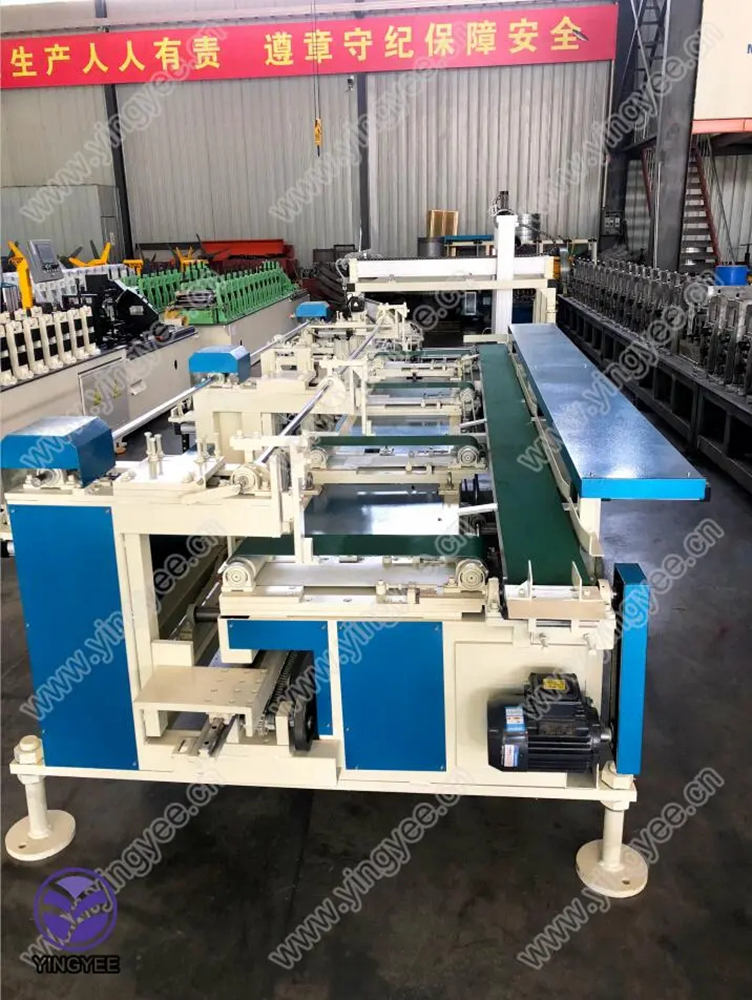
Understanding the Stud and Track Rolling Machine A Comprehensive Overview
In the field of manufacturing and construction, the efficiency and precision of machinery play a crucial role in determining the quality of the final product. Among the diverse array of machines utilized in various industries, the stud and track rolling machine stands out as an essential tool for producing high-quality components with impeccable accuracy. This article explores the functionalities, advantages, and applications of the stud and track rolling machine, highlighting why it has become a preferred choice in many industrial processes.
What is a Stud and Track Rolling Machine?
A stud and track rolling machine is specialized equipment designed for the production of rolled products, particularly studs and tracks used in framing systems. These machines operate by feeding raw material, usually in the form of metal strips, through a series of rollers that shape the material into desired profiles. The process involves several stages, including feeding, bending, cutting, and final forming. The precision engineering behind these machines ensures minimal waste and high reproducibility, making them ideal for high-volume production.
Working Principle
The operation of a stud and track rolling machine can be broken down into several key steps
1. Material Loading The raw material, typically cold-rolled steel or aluminum, is loaded onto the machine. It is crucial to select a material that offers the required strength and durability for the intended application.
2. Rolling The metal strip is passed through a series of rollers that gradually bend and shape it into the desired profile. The design of the rollers is customizable to produce different shapes and sizes. The rolling process is continuous, allowing for efficient production.
3. Cutting Once the material has been rolled into the desired shape, it is cut to length using precision cutting mechanisms. This can be achieved either mechanically or through the use of laser or plasma cutting techniques, depending on the machine's design.
Advantages of Stud and Track Rolling Machines
The stud and track rolling machine comes with a multitude of advantages that make it a valuable asset in various industries

- High Efficiency The continuous production process allows for the rapid manufacturing of components, significantly reducing lead times and increasing productivity.
- Cost-Effectiveness By minimizing material waste and optimizing the production process, businesses can reduce overall costs while maintaining high-quality standards.
- Precision and Consistency The advanced engineering of these machines ensures that products are produced with high-dimensional accuracy, leading to reduced rework and scrap rates.
- Flexibility Many stud and track rolling machines are designed to be versatile, capable of producing different profiles simply by adjusting the roller setup. This flexibility makes them suitable for a wide range of applications.
Applications in Industry
Stud and track rolling machines are predominantly used in the construction sector, but their applications extend across various industries, including
- Residential and Commercial Construction They are primarily used in the framing systems of buildings, producing steel studs and tracks that form the backbone of wall structures.
- Manufacturing In manufacturing, these machines are employed to produce components for machinery and equipment, where precise geometries and robust materials are required.
- Automotive Industry Studs and tracks are also used in the automotive sector, where they are critical in vehicle assembly lines for structural components.
- HVAC Systems In heating, ventilation, and air conditioning systems, rolling machines provide essential components that contribute to the efficient installation and operation of these systems.
Conclusion
In conclusion, the stud and track rolling machine represents a blend of innovation and efficiency in metal forming technology. Its ability to produce high-quality components with precision and speed makes it indispensable in various industries, particularly construction. As industries continue to seek ways to enhance productivity and reduce costs, the role of stud and track rolling machines will undoubtedly become increasingly vital, paving the way for advancements in manufacturing processes. Embracing this technology not only helps to streamline operations but also contributes to the development of more robust and sustainable structures.